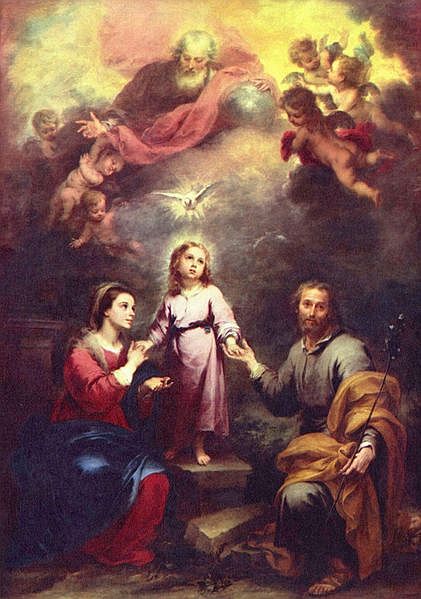God works in mysterious ways. Originally, I wanted to feature another work of art from the National Gallery in London titled "The Mass of St. Giles." Unfortunately, the only site that has it is the National Gallery's
website, and the picture file that they have of it is small. But I would still check it out, since the painting and the story behind it is wonderful.
Instead, I tried a Google search in an attempt to find a depiction of Our Lady of Sorrows. I found a beautiful painting on
a page that describes the devotion to Our Lady of Sorrows (a devotion that I have actually taken up myself)

The artist behind this painting is Adriaen Isenbrant. He was a Flemish artist who lived during the Renaissance. The first thing that I noticed about this painting is the central depiction of Our Lady. The verse from Scripture that came to mind when I saw this depiction is "Mary kept all these words, pondering them in her heart" (Luke 2: 19). These words refer to Mary's response to the visit of the shepherds after Jesus was born in Bethlehem. But later in the same chapter is the first of the Seven Sorrows, which is the Prophecy of Simeon. When Mary and Joseph obediently went to Jerusalem a week after Jesus' birth, to present Him in the Temple, Simeon saw the Christ Child and blessed God, proclaiming his famous canticle. He then turned to Mary and said, "Behold this child is set for the fall, and for the resurrection of many in Israel, and for a sign which shall be contradicted; and thy own soul a sword shall pierce, that, out of many hearts, thoughts may be revealed" (Luke 2: 34-35). As much as the shepherds' words must have moved Our Blessed Mother, Simeon's words must have affected her even more. She definitely pondered these words in her Immaculate Heart, and they filled her with sorrow. But God gave Our Blessed Mother the grace and the strength to endure all of the sorrows in her life.
This first sorrow is depicted in the lower left-hand corner of the painting. The six other sorrows follow in a counter-clockwise order. For those who don't know the Seven Sorrows, they are:
1.) The Prophecy of Simeon
2.) The Flight into Egypt
3.) The Loss of the Child Jesus in the Temple
4.) Mary Meets Jesus on the Way to Calvary
5.) The Death of Jesus on the Cross
6.) Mary Receives the Dead Body of Jesus in Her Arms
7.) The Burial of Jesus
The devotion to Our Lady of Sorrows has been practiced by many saints (among these, St. Ignatius Loyola, St. Alphonsus Liguori, St. Gabriel Possenti, and St. Elizabeth of Hungary), and is sanctioned by the Church. Many older churches have a "Pieta," or a depiction of the Sixth Sorrow, where Our Lady holds the Holy Corpse of Jesus (the most famous of these is Michaelangelo's). TAN Books prints an
excellent booklet on this devotion that I highly recommend. We are brought closer to Our Lord through this meditation on His Mother's sorrows.
Mater Dolorosa, ora pro nobis!









